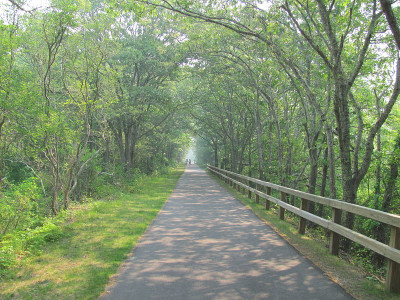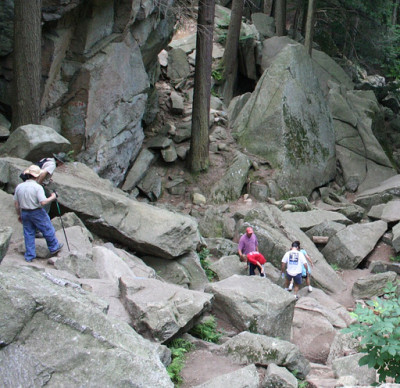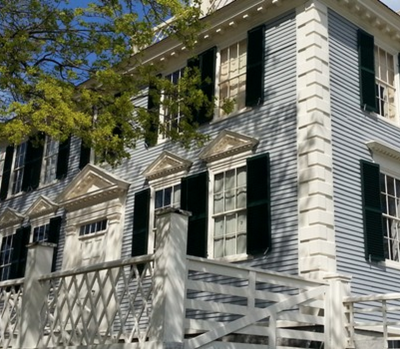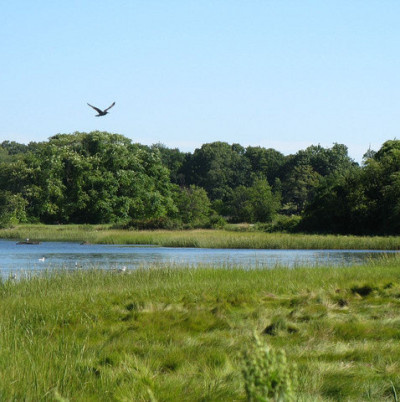Leonard Moorehead, The Urban Gardener: Strawberries and Love Divine
Saturday, June 13, 2015
Leonard Moorehead, GoLocalProv Gardening Expert
 View Larger +
View Larger +
Photo courtesy of Leonard Moorehead
The strawberry rules the June garden. Does the glossy red, heart shaped berry deserve admiration? Do robust quantities of antioxidants and phytonutrients attract health conscious organic gardeners? The strawberry is ranked # 4 in pound for pound nutritional value among all foods consumed in the United States. The lovely red strawberry is an outstanding choice for gardeners of every stripe. Strawberries have claimed a medicinal and culinary role for millennia. Perhaps just as long, the strawberry has touched the heart. Surely, no gardener cultivates a berry with more appeal. Do love, health and reliable results attract you? Look no further, the beautiful strawberry is much more than the sum of its parts.
Strawberries are native to temperate woodlands around the world. Their leaves, roots, and berries are jam packed with goodness accessible to all of us. It wasn’t always so, among Europeans strawberries were noted by classical writers and medieval illuminists as a medicinal plant foraged from the wild. King Charles V of France, known to enjoy the wild berry in royal forests brought 1200 plants into the royal gardens in 1464. Wild strawberries are small piquant berries briefly in season and packed with explosions of flavor. Their woodlands habitat is a clue for gardeners; we duplicate natural growing conditions as much as possible. Royal patronage and plenty of hand labor kept strawberries a regal luxury. Cardinal Woolsey served Henry VIII strawberries and cream in 1538.
Forever linked in love, strawberries were embroidered on Desdemona’s handkerchief, as Shakespeare tells us. Othello’s discovery of love’s symbol fed his fatal jealousy. Our craving for true love hasn’t diminished across time or distance. English colonists in Massachusetts found indigenous peoples mixing tiny dried strawberries into corn meal. Strawberries leapt out of the garden’s margins and into popular cultivation when large berry examples cultivated among Andean peoples in Chile were sent to France in 1714 and accidentally cross bred with those grown nearby in the royal gardens. Larger berries, good flavor and nutritional value moved the berry from kings to peasants.
GET THE LATEST BREAKING NEWS HERE -- SIGN UP FOR GOLOCAL FREE DAILY EBLAST
I can’t imagine a garden without the strawberry. No matter what size or site, the strawberry deserves the gardener’s attention. With typical yields of 21 tons per acre routinely reported in the USA, this berry’s prolific and nearly carefree cultivation is legendary. Nor does their alluring red color and taste trump entrée into the gardener’s heart. Lucky is the child allowed to harvest berries alongside caring adults. Nor can anyone deny the charming red stained fingers and lips on smiling faces? Kindly folks make allowances, one for the basket and one for the child, two for the child or more. Perfectly ripe for only a couple days, the strawberry is at its top form fresh from the garden. Once picked, they do not ripen further and decline within 48 hours from maximum taste and benefit.
Strawberries are naturally prolific in loamy soils high in organic content. They tolerate light shade, mine abound beneath dwarf Asian pear and apricot trees. Yes, strawberries thrive nearly buried under loose straw or hay. Mine are treated to fresh old hay mulch just before leaves fall in October and again after a winter’s dormancy soon after snow melts when the crowns of the plants show signs of life. Grown in full sunshine is fine although like many urban gardeners I am pressured to cultivate sunny spots for sun lovers such as tomatoes, green beans or as now, an adjacent bed of asparagus. Although know to be susceptible to an array of fungus and mold infections, strawberries are remarkably resilient. Good garden practices, such as annual top dressings of compost, lime as needed to near neutral ph, grooming, and a the best tool of all, an attentive gardener, will keep your strawberries thriving.
There are many elegant schemes for maintaining strawberry beds. The urban gardener may see past quite a few as directed towards the commercial grower’s desire for a good crop. Strawberries remain hand-picked and rely upon either quick freezing or speedy transport to market. The urban gardener enjoys the ultimate satisfaction of discovery. Ours is the pleasure of spying a glimpse of glossy red under deep green serrated leaves. Better yet, the journey from plant to palette is measured in heartbeats. Gently savored, strawberries are incomparable. Let’s start with the plants habits for growing tips that work wonderfully for me and anyone else with a little luck.
 View Larger +
View Larger +
Photo courtesy of Leonard Moorehead
Strawberries are often passed from friend to friend in the best traditions of home gardening. Stringy roots join together in a crown that supports three pronged leaves. After a May bloom and ripening period of 4 or 5 weeks, the luscious berries transition from green into white and finally red. The best time to harvest ahead of your chief competitor, robins are drawn to my sunniest patch, is when fully red. Sometimes slugs may damage berries; slugs do well in damp mulches in any garden. Sprinkle table salt on them or plunge cardboard paper towel tubes into water to moisten and leave in shady or distressed areas. Slugs will set up home; fold the tubes and tuck under a spade full of soil for disposal. I sprinkle sand around strawberries to discourage sensitive under bellies and resign myself to sharing part of the harvest with the birds and insects in the garden. Compassion tames animosity.
Lots goes on after a fairly long harvest period, for most varieties in June, for others, the so-called ever bearing, a bump in June and again in September with sporadic berries in all but the dog days of July. Healthy “mother” plants send out runners over the hay mulch. Smaller versions form wherever the runner touches earth, usually within 12-18 inches of the mother. This is when various methods are suggested. I tuck in the runner with nascent crown under the mulch, sometimes going to the length of pinning the runner into the soil with a half brick, often a handful of soil pulled aside, the runner and new crown tucked in, soil patted down, mulch pulled back and we’re done for the moment. You have plenty to do in other parts of the garden just now. Snip and separate from the mother plant after the new runner has independent growth. Turn under the mother plant despite its apparent vigor. Inevitably, everyone overlooks a mother plant or two and it’s no disaster. New strawberry plants have larger and more berries, yields decline precipitously on older plants. Each mother plant will sprout many runners. Given favorable conditions a strawberry patch forms low dense groups in apparent disarray. Attentive gardeners keep the patch mulched. Strawberries are not difficult to nurture, the primary challenges of cultivation are restraining their forays further and further afoot.
Long ago my tolerant nature opened another world to me. Young strawberries leap from bed to turf. I snip the runner, tuck the new plant further down the garden path along the edge or under a fruit tree. Over a few seasons, strawberries form excellent low green margins along the garden paths and under fruit trees. Nature volunteers space to provide fine picking and dozens of new plants each year. The first and last planting of strawberries was five years ago and far away from the original location. For many gardeners, strawberry cultivation is more a process of thinning than planting. Don’t overlook just how much fun strawberries are in the garden. Sometimes the strawberry suffers from familiarity. Not so, don’t allow ubiquitous flavoring or marketing define appreciation of any garden gem.
Container gardeners have the old fashioned strawberry pot. Do not distain. Obtain the largest strawberry pot you can afford. A strawberry pot is tall and has open side pockets. Fill with your best soil mixture and put a young strawberry plant in each pocket and the top. Keep moist and in sunny or bright light. Strawberries not only thrive in large strawberry pots, their noble appearance makes for handsome presentation in every season. Shelter in a protected place over the winter or bring indoors over the darkest months. Force strawberries in a sunny window in January and quarter turn the pot with each watering for early growth. Imagination conspires with need in the strawberry world. Stepped up pancake short or long stack beds work fine. Strawberry containers on tall legs prove very convenient for those who prefer their garden plants at various heights. If tired of strawberries in a strawberry pot, try wax begonias or petunias for stunning floral displays.
Few gardens are memorable over time and space yet strawberries will always endure within. These healthy and tasty berries present fine opportunities to draw parent and child together. The sturdy plants withstand handling, the heady fragrance of a bed full of ripe berries lasts a lifetime and who can resist a kiss from berry stained lips? Much love is found in the strawberry patch. Our world is a better place each June as pick your own farms and urban gardeners alike enter the garden, baskets in hand, pleasure on their minds. Dearest strawberries remain among my oldest friends.
Leonard Moorehead is a life-long gardener. He practices organic-bio/dynamic gardening techniques in a side lot surrounded by city neighborhoods in Providence RI. His adventures in composting, wood chips, manure, seaweed, hay and enormous amounts of leaves are minor distractions to the joy of cultivating the soil with flowers, herbs, vegetables, berries, and dwarf fruit trees.
Related Slideshow: 25 Fun Things To Do For Free In New England
 View Larger +
View Larger +
Prev
Next
1.
Beavertail State Park in Jamestown, RI is a must for a free day of beautiful coastline views and marine life education. Explore the tide pools and look for little creatures, walk on the rocks and admire the lighthouse. It’s a great place to bring kids, a dog, or even just a lawn chair and a book.
Photo Rick Payette/Flickr
 View Larger +
View Larger +
Prev
Next
2.
Providence WaterFire has grown to be an iconic Rhode Island event. Starting out in 1994 to celebrate the 10th anniversary of First Night Providence, it has grown to run continuously, once a month, from May-November and boasts over 80 blazing fires in the middle of the Providence River. WaterFire is a not-for-profit organization that aims to creatively transform Providence – and they do! Each event is accompanied with music by artists from around the world, varies food stands and art stands to browse as you stroll along the river.
Photo: Liz West/Flickr
 View Larger +
View Larger +
Prev
Next
3.
On the first Saturday of every month, enjoy free admission to the Worcester Art Museum from 10am-noon. If you’re a member or a child under 3, you have free admission all the time. Take a trip to the museum to check out the popular Arms and Armor collection, Chinese Art or Islamic Art and much more. A great destination for a free, fun and educational family trip!
 View Larger +
View Larger +
Prev
Next
4.
The idea behind the Blackstone River Bikeway was to create a bike path running 48 miles, from Worcester to Providence along the National Heritage Corridor. It links the Blackstone River and the Blackstone Canal and will eventually connect with the East Bay Bike Path in Rhode Island. The path isn’t completed yet, but riders can enjoy the segment that is, free of charge.
 View Larger +
View Larger +
Prev
Next
5.
Ninigret Park in Charlestown, RI is open to the public every day, year-round. Hours of operation are 8am-sunset. Depending on the time of year you explore the park, you may find festivals and other various special happenings. Otherwise, you can enjoy free access to tennis courts, a bike course, basketball courts, and A Kid’s Place Playground. Most exciting, though, is the free, 18-hole Frisbee Disk Golf Course.
Photo: Ron Cogswell/Flickr
 View Larger +
View Larger +
Prev
Next
6.
If you want a little bit of an outdoor adventure, hike to Royalston Falls in Royalston, MA. The hike itself isn’t too long, but it can be challenging. It leads you to a remote gorge created by prehistoric glacial meltwater and 45 foot plunging waterfall within a half-hidden ravine. If you’re up for the adventure, the destination is far worth the trek.
 View Larger +
View Larger +
Prev
Next
7.
One of Newport’s most famous attraction is its gilded age mansions lining the coast. Entry to the mansions will cost a small fee, but with the Cliff Walk, you can enjoy views of the mansions with breathtaking views of the water for free. The 3.5 mile long path runs behind the mansions on the eastern shore of Newport. It is a National Recreation Trail – the first in New England! The majority of the walk is easy, but be sure to wear good shoes; the sand can make the path slippery.
 View Larger +
View Larger +
Prev
Next
8.
The Sprinkler Factory in Worcester is not actually factory, but rather a gallery. Though, its namesake does come from the real-life sprinkler factory started by Howard Freeman in WWII. Why? Because he embodies “the spirit of innovation.” With the aim of providing the public with a place to display and enjoy the visual arts, the Sprinkler Factory hosts exhibitions once a month, and they’re always free.
 View Larger +
View Larger +
Prev
Next
9.
For Rhode Island’s own version of Boston’s Freedom Trail, follow the painted green line for the Independence Trail. The 2.5 mile tour of historic Providence “takes you over four centuries of history, architecture, culture, and folklore.” Don’t worry about where to begin, the route is circular so you can start anywhere! Along the painted green trail on the sidewalks you’ll find red emblems with a phone number and a location number. If you want some more historical context or to know what it is exactly you are looking at, call the number and punch in your location to hear fun facts and stories about that particular point of interest. You’ll see sights like St. John’s Cathedral, historical cemeteries, and the oldest continuously published newspaper in the country.
 View Larger +
View Larger +
Prev
Next
10.
This is exactly what it sounds like – a place to see real dinosaur footprints! In Holyoke, MA, Dinosaur Footprints is home to more than 130 fossilized dinosaur footprints, available for you to check out up close. Scientists think these prints were the tracks of small groups of carnivorous, two-legged dinosaurs that may have been up to 15 feet tall! The larger prints were likely from an ancestor of the T-Rex. You can find fossils of fish, plants, and more. Don’t miss the group of 20 plus tracks at the site, which helped form the theory that dinosaurs travelled together in packs.
 View Larger +
View Larger +
Prev
Next
11.
If you’re looking for a dose of natural beauty and healthy activity, try going for a spin on the East Bay Bike Path. The first bike facility to be under the State, it is a 13.8 mile trail that connects 8 different parks from Providence to Bristol. Do the whole thing or just a stretch and cross over bridges and by coves on the Narragansett Bay shore. The bike path is open year round.
Photo: Michael St Jean/Flickr
 View Larger +
View Larger +
Prev
Next
12.
Watch Hill was once inhabited by the Niantic Indians in 1600s and later by the colonists. Its historic lighthouse was built in 1806 and the peninsular town became a resort destination in the early 1900s. Over the years it has housed the summer homes of the rich and famous and boasts beautiful beaches and fabulous shopping and dining. Walk around the quaint little town, check out the waves at East Beach and find Taylor Swift’s property.
Photo: pspechtenhauser/Flickr
 View Larger +
View Larger +
Prev
Next
13.
The Mass Central Rail Trail is 104 miles of trail from Boston to Northampton. The trail runs along the old railroad tracks that were destroyed in a 1938 hurricane, hence its name. At this point, the entire run has not been opened to the public and is still underway, but there are still plenty of miles of bike-path to enjoy on a beautiful day!
 View Larger +
View Larger +
Prev
Next
14.
Take a hike at Purgatory Chasm and see the unique landmark that formed naturally approximately 14,000 years ago. Theory has it that the chasm was formed near the end of the last Ice Age with the sudden release of glacial meltwater that had been dammed up. Pretty neat! The chasm is ¼ mile long and runs between giant granite rock, sometimes standing at 70 feet high! You do have to pay to park ($5 MA residents, $6 for you out-of-staters), but exploring the reservation is completely free.
Photo: MHarvey/Flickr
 View Larger +
View Larger +
Prev
Next
15.
Located on Benefit Street in Providence, the Athenaeum is a unique independent library and cultural center. It was founded in 1836 as an independent library supported by its members, but open to the public. The building itself is impressive- a Greek Revival building finished in 1838. The only building in New England to be designed by William Strickland. The Providence Athenaeum doesn’t call itself a public library, or an academic library, or a community center, but instead a combination of all of those things.
 View Larger +
View Larger +
Prev
Next
16.
ArtWorcester is a unique space for artists and art enthusiasts alike in the Worcester community. Their main goal is to “exhibit and promote local contemporary artists, free of charge to the public.” They also open their doors for anyone to participate in the gallery exhibits, including first-timers! The exhibits and openings are always free, and you can see a wide range of artists and creative works.
 View Larger +
View Larger +
Prev
Next
17.
Down in Charlestown, RI on Old Post Road you will find The Fantastic Umbrella Factory. No, they don’t actually make umbrellas. Instead, you will find yourself on a 19th century farmyard “shopper’s paradise and international bazaar.” The old buildings are now inhabited by little shops and cafes and the grounds are covered in interesting and beautiful gardens. As you meander around the property, you’ll see a handful of chickens running around, 2 goats, 3 emus and a lot of ducks. Buy some trinkets while you’re there, or some feed for the animals, or just have fun walking around and seeing everything they have to offer.
 View Larger +
View Larger +
Prev
Next
18.
If you’re interested in the history of Worcester, where better to go than the Worcester Historical Museum? It’s the only institution in the city dedicated solely to local history. The museum offers exhibitions, programs and tours to take you through the history of the city. If you’re under 18, it’s free! It is also free for members.
 View Larger +
View Larger +
Prev
Next
19.
If art is really your thing – or not, and you want to give it a try – check out Gallery Night Providence. From March to November, galleries in Providence will open their doors for free tours on the third Saturday of the month. What started in 1996 with just 9 galleries has grown to include museums and historic sites. You have the option of parking at One Regency Plaza (for free!) and hope on one of their themed buses for a 2 hour long tour of approximately 4 galleries. Buses leave at 5:20, 5:40, 6:00, 6:20, 6:40 and 7:00 pm.
 View Larger +
View Larger +
Prev
Next
20.
Worcester’s Canal District is home to eleven buildings that originate from the early 1800s. Preservation Worcester wants you to enjoy the history available to you, for free! They offer a Canal District Walking Tour, By the Canal, to expose you to the stories of the people and historical events that created Worcester. You can pick up a free tour brochure at the Preservation Worcester office on Cedar Street, download a printable version of the tour and tour map, or download audio files to phone to do an audio tour.
 View Larger +
View Larger +
Prev
Next
21.
Outside of the Providence Athenaeum, the rest of Benefit Street has much to offer. The mile-long stretch is often referred to as “Benefit Street’s Mile of History” and displays beautiful and original Colonial homes, restored churches and museums. If you head to the Providence Preservation Society, you can embark on a self-guided walking tour of the street and its architecture for free.
Photo: DazedEffect/Flickr
 View Larger +
View Larger +
Prev
Next
22.
The RISD Museum in Providence, RI is free to the public every Sunday! You can wander the various buildings and explore their seven different departments, from Ancient Art to Contemporary Art to Prints, Drawings, and Publications. The museum also features special exhibitions.
Photo: Angela N/Flickr
 View Larger +
View Larger +
Prev
Next
23.
Colt State Park, located in Bristol, RI, is another beautiful and coastal park open for free public access all year. The property contains 464 acres complete with 4 miles of bike trails, countless fields to run in, a historical museum and over 400 picnic tables. Enjoy a family day at the park or a romantic picnic for two.
Photo: dippy_duck/Flickr
 View Larger +
View Larger +
Prev
Next
24.
One of Newport’s most famous attractions is its gilded age mansions lining the coast. Entry to the mansions will cost a small fee, but with the Cliff Walk, you can enjoy views of the mansions with breathtaking views of the water for free. The 3.5 mile long path runs behind the mansions on the eastern shore of Newport. It is a National Recreation Trail – the first in New England! The majority of the walk is easy, but be sure to wear good shoes; the sand can make the path slippery.
Photo: Timothy Valentine/Flickr
 View Larger +
View Larger +
Prev
Next
25.
The Rhode Island State House is home to the nation’s 4th largest self-supported marble dome – and you can get an inside look for free. All year, except holidays, the State House offers free hour-long tours Monday-Friday from 9:00 am – 2:00 pm. On the tour you’ll see things like the Bell Room, where RI has its replica of the Liberty Bell on display, and of course, the rotunda, where you can look up at the dome.
Related Articles
- Leonard Moorehead, The Urban Gardener: Seeds in the Snowbed
- Leonard Moorehead, the Urban Gardener: Spring’s Snowy Prelude
- Leonard Moorehead, The Urban Gardener: All For Love
- Leonard Moorehead, The Urban Gardener: Hope Springs Eternal
- Leonard Moorehead, The Urban Gardener: Patience is Virtuous
- Leonard Moorehead, TheUrban Gardener: Snow is Good for Gardens
- Leonard Moorehead, The Urban Gardener: Winter Blooms
- Leonard Moorehead the Urban Gardener: Hollies Forever Holidays
- Leonard Moorehead, The Urban Gardener: Before and After
- Leonard Moorehead, The Urban Gardener: Bless Garden Catalogs
- Leonard Moorehead, The Urban Gardener: Icy Grip? Pass the Salt
- Leonard Moorehead, The Urban Gardener: The Great Melt
- Leonard Moorehead, The Urban Gardener: Let’s Go Green
- Leonard Moorehead, the Urban Gardener: Everyone is a Gardener
- Leonard Moorehead, the Urban Gardener: Asparagus at Last
- Leonard Moorehead, The Urban Gardener: Peerless Pears
- Leonard Moorehead, The Urban Gardener: Sweet Memory
- Leonard Moorehead, The Urban Gardener: Celebrate Roses
- Leonard Moorehead, The Urban Gardener: Spring Busts Out!
- Leonard Moorehead, The Urban Gardener: Container Gardens for Urbanites
- Leonard Moorehead, The Urban Gardener: Vernal Equinox
- Leonard Moorehead, The Urban Gardener: Spring Poised on the Equinox
- Leonard Moorehead, The Urban Gardener: April Opens with Kindness
- Leonard Moorehead, The Urban Gardener: Spring into Action
- Leonard Moorehead, the Urban Gardener: June Smiles
Enjoy this post? Share it with others.























































